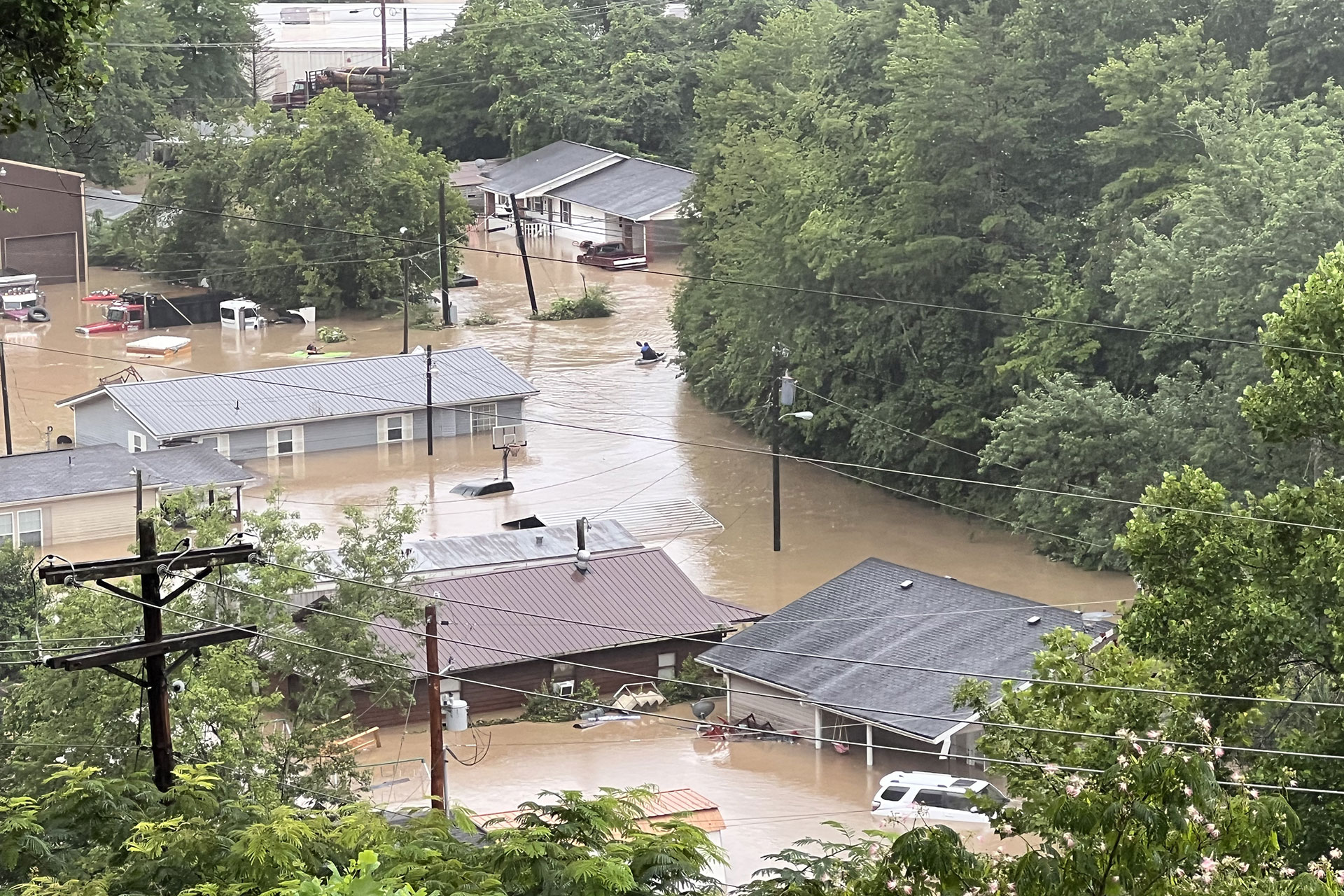Lower-income neighborhoods face greater flood risk, tougher recovery


As extreme weather becomes increasingly frequent and severe, its disproportionate impact on low- and moderate-income (LMI) communities grows. The recent regional devastation of Hurricanes Helene and Milton reemphasized this reality.
The community development teams at the Federal Reserve Banks of New York, Philadelphia, and Cleveland each conducted studies shedding light on these communities’ vulnerabilities and their flood-risk exposure. The studies delve into the economic, social, and environmental consequences of flooding. They aim to inform policymakers and community leaders on resiliency measures most needed in the face of growing climate risk.
Hurricane Ida, which struck New York in early September 2021, exposed the region’s vulnerability to extreme rainfall and inland flooding. Eleven people died in their basement homes as a result of Ida, highlighting the specific risk to inhabitants of low-lying units.
“September 2021 [Hurricane Ida] is when things changed. Water took over the sewer system and backed into my home. I didn’t realize how vulnerable my [basement apartment] was until then. I spent hours with buckets trying to get the water out and cleaning up after that. Even today, any time water comes down, water gets in.”
– James
LMI renters face elevated risk from flooding in New York City. In addition to housing affordability challenges, residents face especially difficult challenges recovering from extreme weather events. Standard renters’ insurance does not cover flood damage. In the event of a federal disaster declaration, federal relief programs offer renters only basic coverage.
The New York Fed conducted a study to understand flooding impacts on the city’s most vulnerable renters and rental housing stock. The analysis drew on data about flood risk from First Street Foundation, a private firm that quantifies flood risk, and FEMA as well as focus groups of flood-vulnerable populations in Brooklyn. The research team initially identified the communities most vulnerable to flood losses, assessing where flood risk, LMI renter populations, and basement housing intersect.
Coastal census tracts tend to be at highest risk, but there are several in Brooklyn, Queens, and the Bronx located more inland where LMI renters are exposed to a moderate to high flooding risk. This is notable, as rainfall-induced flooding is not captured in the flood information used to qualify households for disaster assistance and insurance.
“Some people get the cheapest insurance… I’ve seen worst-case scenarios so many times, seeing people denied [by insurance]. When things hit the fan, you want protection. Everyone should have that protection.”
– Mia
Additionally, the study found that approximately one in 10 immigrants, LMI residents, and residents of color live in a census tract that includes flood-prone basement housing. The city’s most vulnerable residents often reside in these units, which tend to be informal and therefore most accessible to those seeking less expensive rents.
| Basement Type | LMI | Immigrants | Racial/ethnic minorities | Monthly Median Rent ($) |
|---|---|---|---|---|
| Census Tracts with Flood-Prone Basements | 9% | 9% | 10% | $1494.36 |
New York Fed researchers then conducted focus groups in partnership with organizations from Brooklyn and Queens to understand the impacts of flood events on the household finances of LMI residents. The focus groups produced four main insights:
“In Bed-Stuy, we have a lot of community groups and churches… that’s where the support was. It was the community. None of that was mobilized through the city. We needed to check on single moms in this building, we needed to check on seniors in that building, all while making sure that you’re okay too.”
– Ava
The Philadelphia Fed authored two reports on flood hazards in Pennsylvania, New Jersey, and Delaware.
One report examined flood exposure and risk by neighborhood income level using flood measures from the First Street Foundation. The objective was to understand flood implications for lower-income communities across the three states.
Findings from the analysis on neighborhood income disparities and flood hazards:
The disparities matter in part because flood risk in noncoastal areas of the three states is less likely to be covered by flood insurance. The second report contrasted two measures of flood risk—Federal Emergency Management Agency (FEMA) Special Flood Hazard Areas (SFHAs) and a comparable First Street Foundation measure—to understand where these measures align and diverge in identifying properties that bear substantial flood risk.
Results from the report show that 8.8 percent of properties in noncoastal, lower-income areas do not fall within a FEMA SFHA. Yet the First Street Foundation estimates that these properties have at least a one percent annual chance of flooding.
Because insurance isn’t required for properties outside of SFHAs, households in these noncoastal areas are less likely to have flood insurance. As a result, property owners and mortgage lenders—private firms and government-sponsored entities such as Fannie Mae and Freddie Mac—may be unaware of the true risk they bear from extreme weather. Limited access to resources and insurance may leave lower-income households particularly vulnerable.
The charts below break down the shares of FEMA and First Street Foundation-designated properties in coastal and noncoastal areas by neighborhood income and majority race/ethnicity.
Eastern Kentucky has a long history of flooding, owing to its topography, location, and coal mining legacy. Following a particularly devastating flood in July 2022 that claimed 44 lives, the Cleveland Fed took a closer look at the disaster’s impact on housing in the 13 counties declared federal disaster areas.
Analysis of academic literature, available data, and interviews with key stakeholders directly involved in the recovery found four key takeaways:
These studies underscore the acute consequences of flooding for LMI communities across three distinct geographies. Focus groups with LMI renters in New York City revealed that those impacted by flooding events grappled with diminished housing safety and security and damaged or lost possessions. Additionally, these renters faced increased physical and mental health challenges, and often couldn’t move to higher ground where flood risks were lower due to economic barriers like housing affordability.
In noncoastal areas of mid-Atlantic states, flood exposure and risk tend to be higher in lower-income neighborhoods than higher-income ones. Still, the highest overall exposure and risk is concentrated on the coast. For LMI households, flooding can be particularly costly without access to the financial resources and insurance needed to recover.
Finally, as shown by the impacts of the 2022 Eastern Kentucky Flood, extreme weather not only affects individual households but has regional economic impacts as well. Affordable housing shortages, increased population outmigration, and declining employment in occupations key to recovery continued to affect the region months after the flood.
Through these studies, the Federal Reserve Banks of New York, Cleveland, and Philadelphia seek to shed light on the disproportionate impacts of flooding in lower-income communities and the economic challenges lower-income households face when recovering from such events. Findings from the research might help inform policymakers and community leaders developing targeted disaster resilience and mitigation strategies to support those most vulnerable.

Industrial flex space has become a quiet favorite among sophisticated investors seeking durable income backed by real business demand. If...

Getting an inheritance is the epitome of a mixed blessing. You receive a financial windfall, but the cause is the...

During his tenure as the California Secretary of Health and Human Services, Mike Wilkening cemented his reputation as a steady...